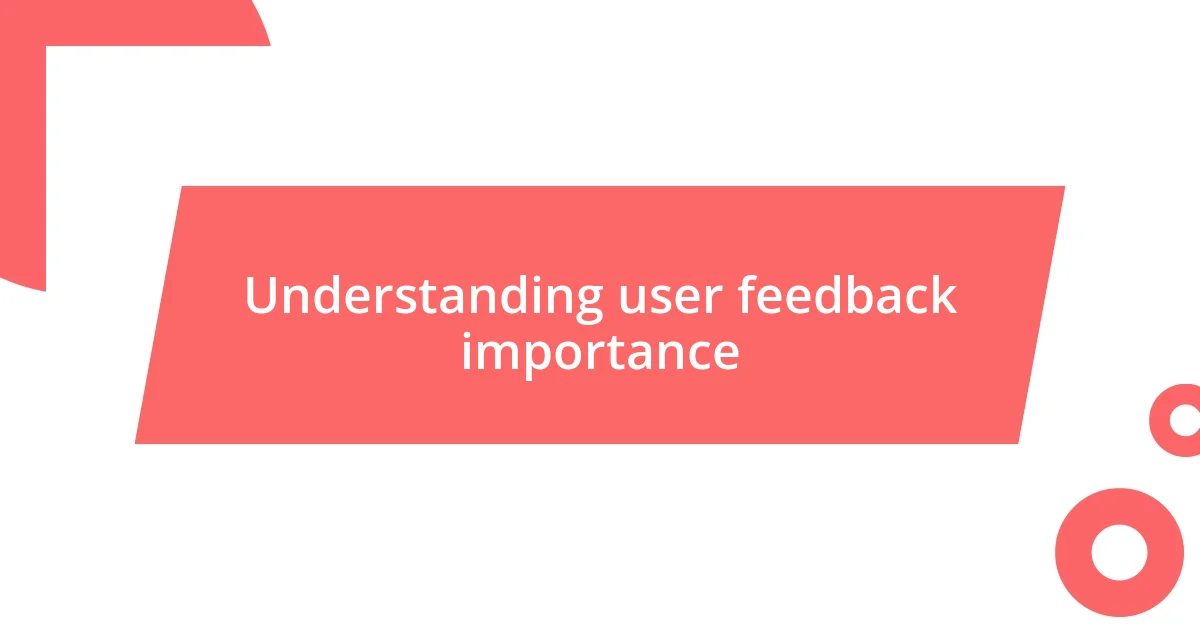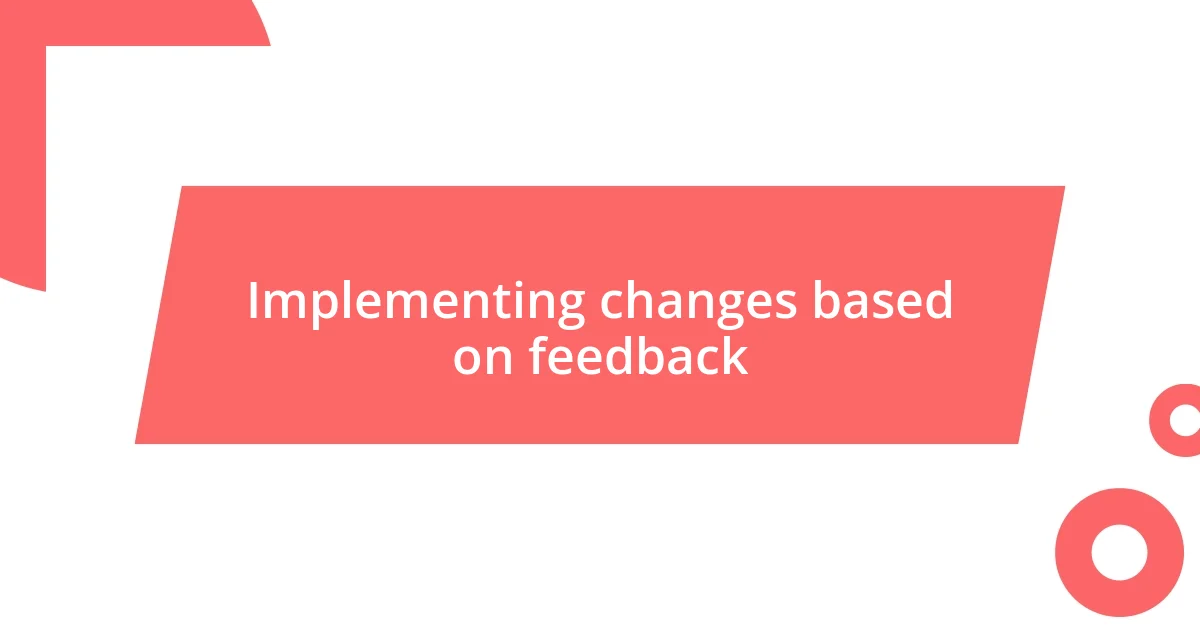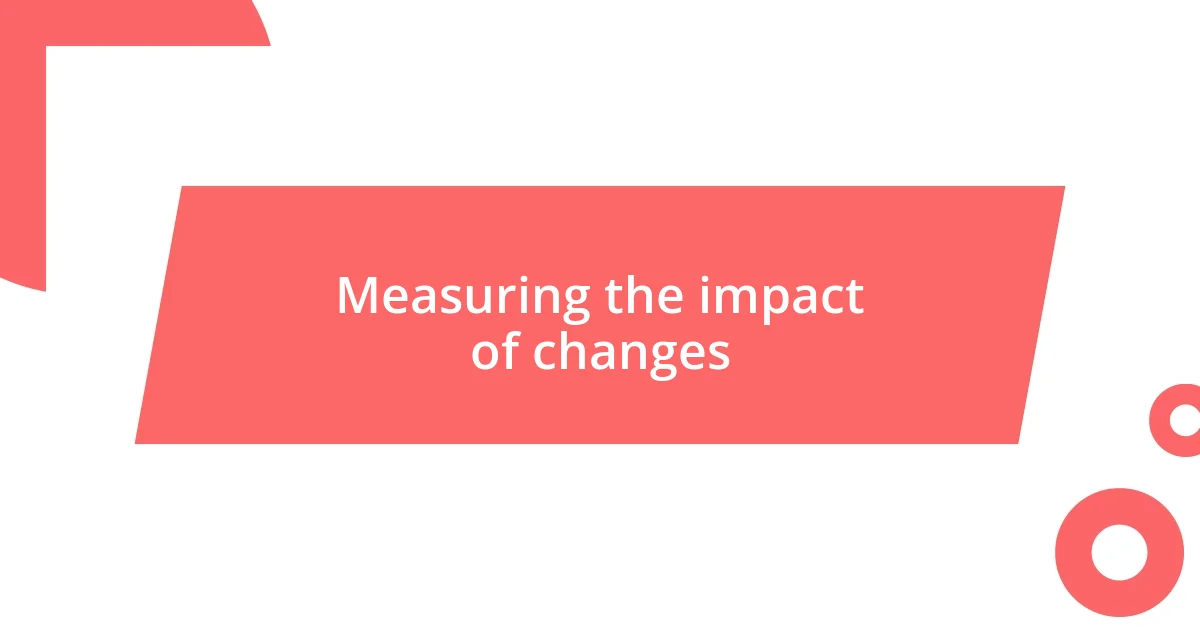Key takeaways:
- User feedback is crucial for identifying pain points and improving contract clarity, leading to a deeper connection with users.
- Effective feedback analysis involves categorizing insights, prioritizing actionable changes, and continuously engaging with users to enhance document usability.
- Communicating updates transparently and using visuals fosters trust and strengthens user relationships, emphasizing the importance of continuous improvement in the feedback process.

Understanding user feedback importance
User feedback is like a treasure map for anyone involved in creating contracts. I remember when I first started reviewing user comments; every piece of feedback felt like unearthing a gem that guided me toward better decisions. Isn’t it fascinating how a few honest insights can illuminate the path to improvement?
Listening to users reveals hidden pain points that we might not recognize ourselves. I once received a comment that highlighted a confusing clause in a contract—something I had overlooked entirely. That moment was a real eye-opener for me. How often do we take for granted the clarity that our users need?
The emotional weight of user feedback can’t be underestimated. Knowing that someone feels supported or confused by a contract gives us a deeper connection to them. When I gather feedback, I often wonder: what stories lie behind these comments? Their experiences enrich my understanding and ultimately drive me to create more user-friendly materials.

Identifying key feedback sources
Identifying key feedback sources can be a revelation in shaping efficient contracts. One of the most impactful sources I’ve discovered is actually the end users themselves. During a project I worked on, a user group provided insights that were both shocking and invaluable—there were elements of the contract they found not just confusing, but frustrating. Engaging directly with these users has transformed my approach to drafting documents.
Another significant source comes from stakeholders involved in the contracts. In one instance, a project manager shared her reservations about certain terms affecting workflow. Her feedback made me realize how vital it is to incorporate perspectives from various roles in the user hierarchy. How often do we overlook these critical voices while drafting?
Lastly, online forums and customer service interactions hold a goldmine of feedback. I often browse through support tickets related to contract issues. In my experience, those snippets often reveal common concerns being raised by multiple users, highlighting trends we must address. It’s a proactive way to catch issues before they escalate.
| Source | Description |
|---|---|
| End Users | Direct insights on contract clarity and usability |
| Stakeholders | Feedback from project managers or team leaders on operational impacts |
| Online Forums/Support Tickets | Common concerns and recurring themes from customer interactions |

Analyzing feedback for insights
Feedback isn’t just data; it’s an opportunity to delve into the user experience and extract meaningful insights. I recall a time when I sifted through a batch of comments and noticed a recurring theme that caught my attention. Users expressed frustration about a particular jargon-heavy section. It was astonishing to realize how a simple tweak could drastically improve the clarity of that section, making it more accessible. Such moments remind me that feedback analysis is fundamentally about empathy—seeing contracts from the users’ perspectives.
Here are some strategies that I find effective when analyzing feedback for insights:
- Categorize Feedback: Group comments by theme (clarity, usability, emotional response) to spot trends.
- Prioritize Actionable Insights: Focus on feedback that suggests specific changes you can implement right away.
- Engage with Users: Follow up with users who provided insightful feedback for deeper discussions—this can lead to more nuanced understandings.
- Track Improvements: After making changes, revisit the feedback to assess if concerns were genuinely addressed.
- Create a Feedback Loop: Encourage an ongoing dialogue to continuously refine and improve the contract process.
Through this approach, I’ve seen how thoughtful feedback analysis can transform contracts into clearer, more user-friendly documents. Each comment is a stepping stone toward greater satisfaction and trust.

Implementing changes based on feedback
When it comes to implementing changes based on user feedback, I often find myself energized by the prospect of making tangible improvements. For instance, I recall a time when a team member pointed out that certain clauses were not just technical but felt detached and impersonal. By revisiting those areas and infusing a more conversational tone, the document not only became clearer but also fostered a sense of trust. Isn’t it fascinating how a shift in language can transform the user experience?
I also believe in the power of quick wins. After receiving feedback suggesting simpler alternatives for complicated terms, I made it a goal to revise those sections as soon as possible. I can still remember the positive responses I received after those adjustments were rolled out. It’s almost as if users then felt they had a voice and their concerns truly mattered. Isn’t that a wonderful feeling when people recognize their input has led to a better outcome?
Moreover, tracking the effects of these changes is crucial. One time, I implemented feedback regarding contract layout, which was initially perceived as cluttered. After redesigning it for better flow, I took the time to follow up with users. The overwhelming consensus was one of relief and satisfaction. This experience reinforced my belief that continuous improvement not only enhances usability but also cultivates loyalty. What better way to foster a community than by listening and acting on what truly matters?

Communicating updates to users
After gathering insights from user feedback, the next vital step is communicating updates effectively. I’ve discovered that users appreciate transparency, so I make it a point to summarize changes and share them clearly, without overwhelming them with technical jargon. One memorable experience was when I sent out a concise email updating users on adjustments made to the contract language. The positive responses I received made it clear that users valued being kept in the loop.
In addition to emails, I find hosting brief webinars to discuss updates can be incredibly effective. I once led a small session where I walked users through the key changes and encouraged them to ask questions in real time. It created a vibrant dialogue that not only clarified misunderstandings but also built a stronger sense of community around our contracts. Have you ever participated in a session like that? It can be quite enlightening!
Lastly, I like to use visuals whenever I communicate updates. For example, after redesigning a section, I created a side-by-side comparison showing the old and new formats. That simple approach transformed feedback into a tangible, visual experience. Users often expressed appreciation for seeing the before-and-after changes; it reinforced their trust and actively involved them in our continual improvement journey. It’s these small touches that turn a simple update into a meaningful connection.

Measuring the impact of changes
Measuring the impact of changes can often feel daunting, but it’s truly insightful. One approach I’ve taken is to set up metrics for success right from the beginning. For example, after revising the language in contracts based on user input, I monitored user engagement through a simple survey. The moment I saw an uptick in comprehension scores, it felt like a win that validated our efforts. Isn’t it rewarding to see numbers reflect positive user experiences?
I also understand that qualitative feedback is just as important as quantitative data. After implementing a new structure for a complex contract, I reached out to several users for open-ended feedback. One user shared that it felt like they were reading a much friendlier document, which completely brightened my day. I find that these personal stories can provide invaluable context that numbers alone often miss. Have you ever had a moment like that, where a personal touch truly resonated?
In my experience, comparing user behavior before and after changes gives a clearer picture. When I shifted the layout of our contracts, I noticed users clicking on sections they previously glossed over. I made sure to document those changes and review the analytics closely. It powered my understanding of what resonates with users. It’s fascinating how data can paint a story, isn’t it? By continuously measuring the impact, I can refine our approach and stay aligned with users’ evolving needs.

Continuous improvement of feedback process
To enhance the feedback process continuously, I’ve learned that iteration is key. For instance, after gathering feedback on a recent contract update, I organized follow-up sessions to dive deeper into suggestions. It was fascinating to see how users built upon each other’s ideas, and it really sparked a sense of collaboration. Have you ever witnessed a discussion evolve into something greater than expected?
One of my favorite techniques is to create a regular feedback loop. I implemented quarterly reviews where we reflect on user comments and prioritize adjustments based on their input. This steady rhythm not only keeps our approach fresh but also reassures users that their voices are heard. It’s like nurturing a garden—the more you tend to it, the more it flourishes.
Additionally, I often encourage users to share not just what they think but also how they feel about the contracts. A user once said that feeling involved in the process made them more confident in the agreements they signed. Hearing that reminded me of how essential emotional engagement is for building trust. Wouldn’t you agree that feeling valued in a process can transform the entire experience? Being open to continuous improvement in our feedback process creates not just better contracts; it cultivates meaningful relationships.















